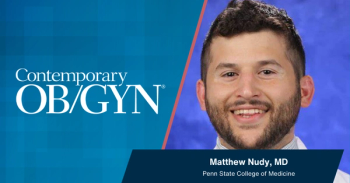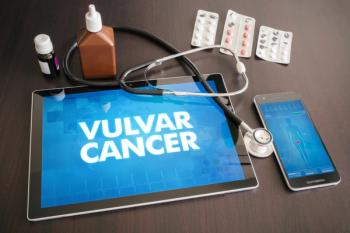
Web-based tool for family cancer history information collection
In an interview with Targeted Oncology, Melissa K. Frey, MD, discussed findings from implementing web-based health information collection of family history in patients with gynecologic cancers.
In clinical practices, many barriers exist with collecting adequate family history.The issues with data collection begin at the primary care level and expand into oncology care, according to Melissa K. Frey, MD.
Practices face a lack of provider training, limited appointment time, inconsistent documentation options in the electronic medical record, and limiting the time patients have to contact relatives for additional information about their history. On average, Frey, an associate professor in the Division of Gynecologic Oncology at Weil Cornell Medicine says it takes 30 minutes to perform a comprehensive family history evaluation. In clinical practice, most physicians only spend 2.5 minutes discussing family history, underscoring an issue with health information collection.
A key question was asked by Frey and colleagues at Weil Cornell Medicine before they conducted a prospective randomized trial of a web-based tool use to collect health information in a gynecologic oncology outpatient clinic. The question was can technology help to overcome the limitations in family cancer history collection?
In an interview with Targeted Oncology™, Frey discussed findings from implementing web-based health information collection of family history in patients with gynecologic cancers.
TARGETED ONCOLOGY ™: What were the results of the prospective randomized trial?
Frey: Our third arm involved 20 additional minutes in the office. It involves working on an office computer, and it involves being in contact with the research team. So, unfortunately, we had to close that arm due to COVID because it just did not seem safe or reasonable to again increase time spent in the office and contact with additional office staff. Fortunately, we had already enrolled enough patients per our power calculation to perform our analyses. Although we were hoping to enroll more our patients into each arm for some of our secondary outcomes.
When we looked at the results of each of our arms, we found that the family cancer history that's collected when using this web-based tool is more robust when we use the tool versus what is being used regularly in practice, which is a face to face interview. So, we're able to collect information on a significantly greater number of relatives, especially when we're trying to capture information on second- and third-degree relatives. We're able to capture more information on multiple generations. We're also able to capture more of the elements that have been deemed your high-quality family health history. This helped us to know whether something's on the maternal side, or paternal side.
Sixty percent of patients were able to complete the web-based tool. When the web-based tool was administered in the office immediately prior to the visit, 94% of patients were able to complete the tool. So, we were disappointed that only 60% of people completed the web-based tool when it was administered via an email. Because really, this is the direction we have to move in, given the pandemic. Also, just thinking about technology that's going to be scalable, we can't rely on patients having more time in the office, or patients having an available office staff to work with them. And so, we're disappointed that we didn't have higher uptake with that arm. However, we're very excited that we're able to obtain high-quality family cancer history with this tool. I think the next step is just thinking about how we can make this more accessible to patients.
What were the surprising factors about this study?
On follow-up interviews, we realized that there were 2 major barriers with this tool. One barrier was that it was not accessible on a smartphone, and we realized that patients want technology that could be accessed on the smartphone. Having to use a tablet or laptop or standard computer is going to decrease participation. Also, patients wanted access to real-time feedback because as people questionnaires about family history and cancer history, questions come up. Patients really benefited from having office staff available. Having office staff available and doing this in an office on your office computer is not scalable in general, especially not scalable during the COVID-19 pandemic. That has led us to propose a future trial which we're already working on. It's going to make this type of technology accessible on a smartphone. Also, we want to use artificial intelligence to provide some of that real-time feedback because with artificial intelligence, you can have natural language processing so that patients can get some of that feedback, which hopefully will help them use this type of tool.
How do you see a health information collection tool like this impacting gynecologic oncology care?
Our goal is to use this type of information to show gynecologic oncologists, but also the general field of obstetrician gynecologist and primary care providers that collecting the family cancer history is critical. We want to show that there are tools that can help make this process easier, because we know that providers often report that they have insufficient office time and insufficient training to make this happen. This type of tool is a response to both of those issues, because we're going to make this happen outside of office hours.
We're also going to make the process of evaluating the information and transforming it into a risk model and triage plan automated for a provider. In our institution, we would like to introduce this as part of standard care for all patients. They will complete an application like this to help collect their family cancer history. We also are proposing that we use throughout our institution beyond even just obstetrics and gynecology.
References:
Frey M. Using health information technology to improve collection of family cancer history: Prospective randomized trial of web-based tool in a gynecologic oncology outpatient clinic. Slides presented at: Society of Gynecologic Oncology 2021 Virtual Annual Meeting on Women’s Cancer; March 19-25, 2021; virtual. Abstract 10643
Newsletter
Get the latest clinical updates, case studies, and expert commentary in obstetric and gynecologic care. Sign up now to stay informed.











